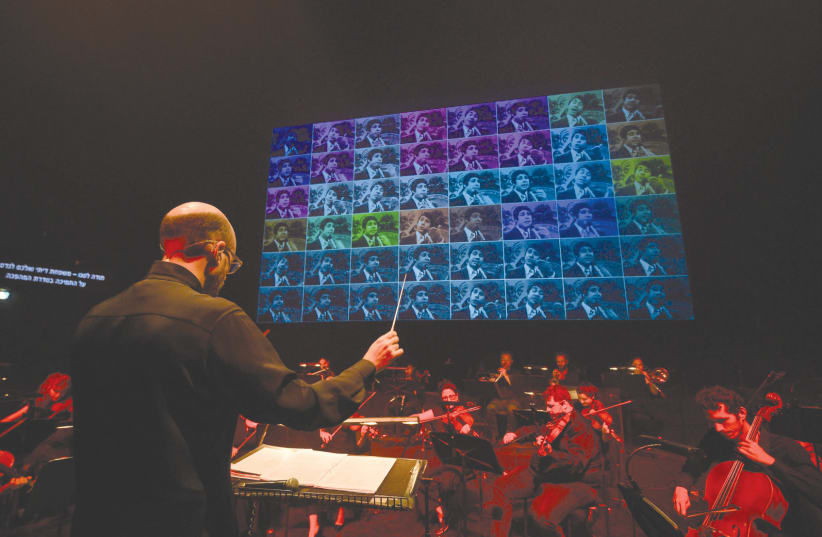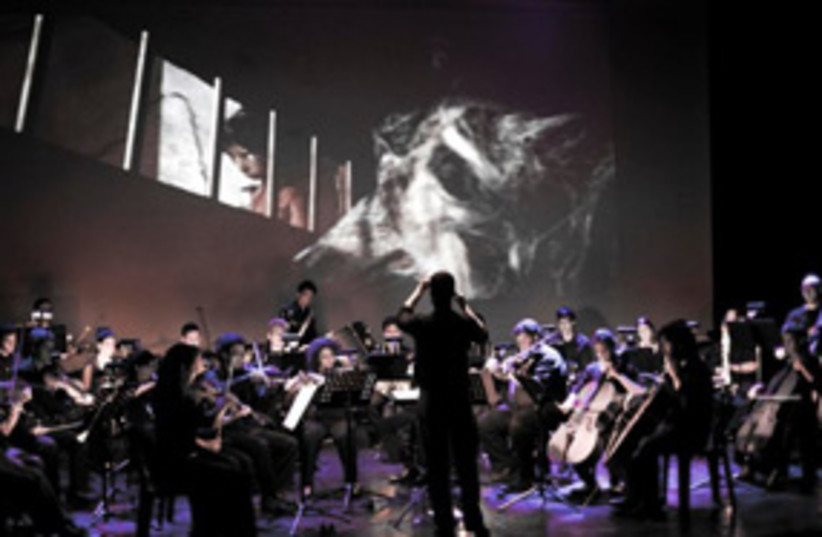The Revolution Orchestra has been shuffling the musical disciplinary cards for quite a while now.
Under the steady and adventurous guiding hands of founders-artistic directors, composer Zohar Sharon and conductor Roy Oppenheim, the ensemble has taken on all sorts of hybrid musical projects that were previously considered, at best, misfits.
For the past 17 years, the troupe has coupled its unfettered orchestral approach with a wide range of artists, from across the stylistic and genre domains, kicking off with the Israeli Rock Project, featuring symphonic renditions of numbers by such leading rockers as Berry Sakharof, Assaf Amdursky, Corinne Alal and Hachaverim Shel Natasha.
Since then, Sharon and Oppenheim have steered the ensemble through a musical play that married the poetry of Yehuda Amichai with the teachings of 20th-century Austrian-born Jerusalemite philosopher Martin Buber, a project that fed off Russian Romantic composer Modest Mussorgsky’s feted “Pictures at an Exhibition”, a high-octane interface with ethnically leaning rocker Dudu Tassa and a fascinating interdisciplinary fusion with the Vertigo Dance Company.
There doesn’t appear to be any artistic departure that Sharon and Oppenheim consider to be a creative overreach.
The Revolution gang is currently digging its by now practiced nails into the oeuvre of the legendary Roosters (Hatarnagolim) review act, which was all the rage across the country in the early 1960s, and which provided a springboard for numerous musical and comic turns. That includes seminal comedic-musical trio Hagashash Hahiver – aka Hagashash – whose members were in the Roosters lineup from the start.
The latter is also currently getting a deft fun orchestral makeover, with the next show lined up on November 9 at the Haifa Auditorium to present The Roosters – The Remix, with arrangements and scores by Amir Lekner, and then on to The Opera House in Tel Aviv, on November 10 at 9 p.m.
But taking on the work of established members of the Israeli musical pantheon could be a double-edged sword scenario. You’re probably going to have some older folks coming along to your shows looking to hear respectful reprises of the sounds they grew up with, only to find that Oppenheim and Sharon have different ideas as to how to cook the yesteryear gems.
Just in case you lean toward the more conservative, or faithful, line of thought, it may come as a surprise to learn that the people who were there when it all started are perfectly happy, nay overjoyed, about the contemporary Revolution Orchestra take. In fact, Shaikeh Levy and Gavri Banai, the two remaining members of Hagashash – Yisrael Poliakov died in 2007 – were moved to suggest the possibility of the trio’s comic-musical output also getting the Revolution once over.
“We began with video clips of The Roosters, and when they saw what we’d done with the visual material, they said they would be delighted for us to do something based on Hagashash,” says Sharon. “They didn’t say exactly what it was they were looking for. We went to Shaikeh’s home. They were so excited. We were, too. We said it would be a great honor for us to try to create a show based on Hagashash material.”
But this is not about just recycling the skits and catchy numbers for the older lot who remember the first time out, and introducing the younger crowd to some of this country’s most iconic acts.
“We never try to reconstruct what the [original] artist did on stage,” Sharon explains. “We try to create a new show, to feed off their art via video excerpts.” That worked for the Hagashash duo. “They gave us carte blanche,” Sharon chuckles.
AFTER 17 YEARS in the multidisciplinary revival business, Oppenheim says he and Sharon have developed a tried-and-trusted aesthetic mindset that helps to guide them through the project at hand, regardless of the nature of the source material.
“It doesn’t make any difference if we are working with Sakharof or [veteran pop-rock] vocalist Gidi Gov or Hagashash,” Oppenheim declares. “On the other hand, we always search for material that leads us into the work. That is part of the orchestra’s DNA.”
The comic threesome’s oeuvre led them along a left-field pathway. “The Hagashash material demanded a very different approach, in terms of working with the screen [with original footage and new graphics], with regard to having a choir of 50 girls, and having two actors on stage, too.” It is, says Oppenheim, a delicate balancing act. “We have our aesthetic principles, but we always have to see what the material demands from us. So, even if we are talking about the same format, the end result is very different from, for example, The Roosters’ performance.”
That also impacts on the ensemble lineup whereby if, for example, there is a more Middle Eastern slant to the source artists, there may be a more ethnic instrument or two woven into the sonic fabric.
There are also logistics to contend with.
“For The Roosters show we didn’t have much in the way of raw material,” says Sharon. “We had poor-quality footage from a show they did on Belgian TV [from 1963], with [Dutch] subtitles. Taking that and creating a show of an hour or an hour and a quarter was quite a challenge.”
However, it seems they duly got the job done, with the end result doing justice to the original musical and visual offerings, but with some healthy contemporary seasoning.
For tickets and more information: Tel Aviv – (03) 692-7777 and www.israel-opera.co.il; Haifa – (04) 837-7777 and www.barak-tickets.co.il

